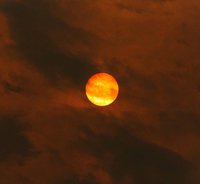
The atmospheric composition of terrestrial planets is one of the deciding factors in their climate and habitability, and it is controlled by a multitude of factors. One major control is photochemistry – destruction of atmospheric molecules by incoming stellar photons and generation of photolysis products. In the Solar System, photochemistry is vital in producing protective ozone shields (e.g. Earth) and aerosols (Venus and Titan), and quickens atmospheric escape (Mars). In this talk, I compare the photochemical responses of two endmember terrestrial planet atmospheres – the oxidized Martian atmosphere and the reducing and hazy Titan atmosphere – to exposure to an M dwarf’s spectral energy distribution. Terrestrial worlds orbiting M dwarfs have recently become the focus of astrobiological interest due to their potential abundance and relative ease of detection. However, differences in the spectral energy distribution and evolution of M dwarfs mean that terrestrial Solar System analogues may behave very differently if placed in orbit around such stars. For a Mars-like world, I show that high abundances of CO, O2, and O3 could persist to such an extent that the latter two species’ mixing ratios rival that of modern Earth given sufficient oxidation due to early hydrogen loss. This results in a false biosignature, as the rise of O2 and O3 on Earth stems from biology. However, this false signature can be unmasked by noting the lack of water features in the spectrum of the planet. For a Titan-like world, I show that altering the spectrum of incoming stellar radiation changes the abundance of different trace species differently, reflecting the complex chemical cycles in play. Emission from such a world can be used to probe photochemical processes at work. Furthermore, the haze abundance does not appear to change significantly, which may complicate future efforts to probe deep into the atmospheres of Titan-like exoplanets. Finally, I will discuss preliminary results for a Venus-analogue orbiting an M dwarf. Large numbers of Venus-like worlds will likely be discovered by TESS in the near future that can serve as prime targets for JWST.
 Getting Under Europa’s Skin
Getting Under Europa’s Skin Tracing Formation and Evolution of Outer Solar System Bodies Through Stable Isotopes and Noble Gas Abundances
Tracing Formation and Evolution of Outer Solar System Bodies Through Stable Isotopes and Noble Gas Abundances Photosynthesis, a Planetary Revolution
Photosynthesis, a Planetary Revolution Xenon: King of the Gases
Xenon: King of the Gases